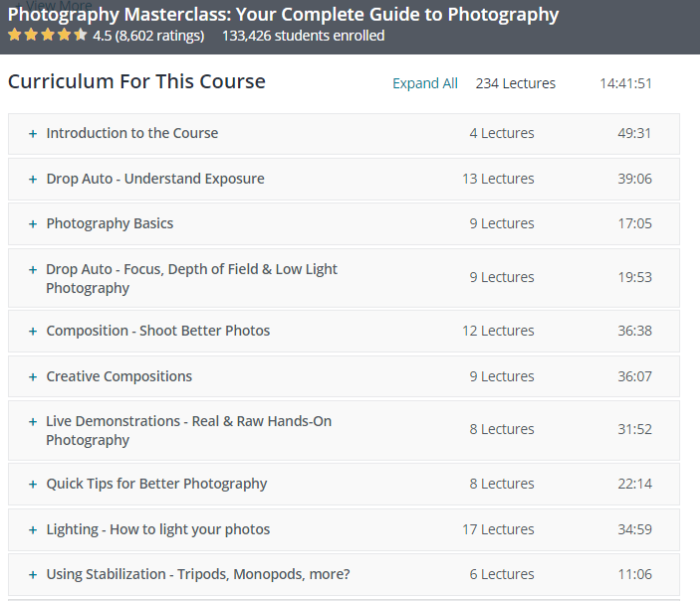
In my last article, I showed you how to come up with course ideas in 20 minutes or less. Once you have the ideas the next step is to validate those ideas to see if people are interested in this topic but most of all to see if it’s a profitable topic people will pay for.
It’s actually simpler than you think. The best part is you don’t have to do all kinds of crazy stuff like surveys, or jump on Skype calls with people.
Although those things will help, you can find everything you need to know by just doing a little digging on the internet yourself.
In this article, I’m going to walk you through the 5 steps you need to take validate a profitable course idea.
Resource: Before we start if you’re still having trouble finding an idea for a course then check out this free list of 287 Proven Ideas I put together. You can sign up to this in the right side bar.
[convertkit form=5102688]
Step #1 Find Other Courses Like Yours
The first step is to find other courses similar to the one you want to create. Now you might be thinking if there are already a bunch of courses out there just like mine then why should I create it?
The answer is simple, if you find a course on the same topic it’s likely because it’s selling. This doesn’t mean it’s a sure thing but it’s a good start.
To do this I like to go to Udemy.com. Udemy has a course catalog of thousands of courses that you can browse and the best part is that you can learn so much from the information they give.
To start go to Udemy and do a search for the type, of course, you are planning to make.

As an example, if I were to create a course on photography and type that in I would get the page you see below.

After doing this search I noticed there are a bunch of courses on this topic which is another good sign. However, I noticed something else when I looked at the results.
Can you guess what it is?
The top 4 courses are all bestsellers which means a lot of people are buying these courses which makes it a hot topic. These results also tell us which topics are the hot niche topics within photography.
As you can see above anything on DSLR Cameras, and post-processing and editing are good topics to consider. So just by doing this initial search, we learned a lot but let’s dig deeper.
Side Note: If you can’t find a course talking about the topic you want to create then it’s likely one of two situations. One that it’s new and nobody has done it yet or that nobody is interested in the topic. If this is your first course I would find something similar to what I’m showing you above for the best results.
Steps #2 Look at the Course Description
After our initial search, it looks as if we found a great topic, but we can certainly dig deeper. Now that you’ve done the search click on one of the most popular results. In my case, I picked this course…

One thing that I noticed right away was a number of students this course has. This is an obvious clue that people will buy a course on photography.
From here if you scroll down the page and look at the course description you’ll see what this course is all about. I noticed this course talks about taking great photos and how to sell them online. This is an interesting angle on the course that I noticed they didn’t mention anything about in the title.
However the part of the description I found the most helpful what the section on the Target Audience.

This helps me get a clear understanding of who might be interested in buying this course so when you’re looking to develop a course you can draw from this instead of starting from scratch.
One last thing I noticed was that this course covers a lot of different audience types and this could be beneficial in narrowing down to a more specific audience.
For example, the first demographic is a course for those who want to take better pictures, and the last demographic is for anyone who wants to make money with photography.
This is obviously a pretty wide niche and by narrowing things down to just one of these topics means we could make move in on this topic a lot easier.
Side Note: I talk more about niching down in step 5
Step #3 Review the Course Curriculum
Your next step is to review the course curriculum and see what they’re covering. If it’s a popular course you can see what people are learning and use it help you determine what you should put in your course.

As you can see this course covers everything from the basics to composition, lighting, and a whole lot more. This course is actually a very a big course but it’s full of great ideas that you could add to your course.
Take a moment and jot down some of the topics that you would like to add to your course.
Step #4 Check Out the Reviews
The fourth step is to look at the reviews of these courses. The great thing about these reviews is that they can show you what people liked, didn’t like, and what they would have liked to have seen in this course.
To do this scroll down to the reviews section of the course in Udemy and click on the 3 Star reviews. I find the 3-star reviews give the best feedback. The 5-star reviews are usually a bunch of fluff and the 1 start reviews typically end up being a negative rant.
Side Note: You’ll want to open up a spreadsheet or a word document to copy some of this info down so you can review it all later.

After going through the reviews in this course here a few reviews I found that contained some great information about things you could do to improve your course.
Review #1

First, you can see that this person mentions that the course title is a bit misleading in that they were expecting something a bit more advanced. They also felt like the course had a lot of the person talking rather than showing how things worked.
Review #2

In this review, Melanie mentions that she likes the shorter videos under 3 minutes which is very valuable info. They also mention that they like downloadable notes pages with each video and the few short assignments included as well.
Review #3

In this review, Jonas wished each section would have had more of a solid summary and that the audio was a bit on the lower quality side.
This is just 3 reviews from 1 course that I skimmed through in about 5 minutes of time. There are 8600 reviews in this course alone that you could look through and dozens of other courses you could look at.
In the end, this info is powerful and will help you make a better course that people will like.
Step #5 Niche Down
The final step is to review all of your information and niche things down. If there’s one thing I’ve learned from creating my first online course is that you need to niche things down to a very specific topic.
The example of photography is actually way to broad and could be narrowed down to something much more specific. To do this I like to use the level down method. Basically what you’re looking to do is to break down your course topic at least 3 to 4 levels deep.
Here’s an example of how you might niche down your photography course.
Level 1: Beginner Photography – This is the general topic of your course.
Level 2: Moms – This is the target group of people we’re targeting
Level 3: Use their smartphone – This level is breaking things down more the type of camera they are using.
Level 4: Your Kids – This level is the who the mothers want to take pictures of.
What’s nice about this little exercise is that it breaks down your topic but also helps you create a 1 line sentence that helps you convey that message to your core audience. So if you take the info of the four levels above you would get a sentence that looks like this.
I teach beginner photography to moms who want use their smartphone to take better pictures of their kids.
Now that’s specific!
If you’re having trouble narrowing down your course idea do a search in Udemy to see what everyone is talking about.

Here are just a few topic ideas I came up with by just looking at the results in Udemy.
- DSLR Cameras
- Post Processing and Editing
- Composition
- Lighting
On top of that, you can skim through these ideas to find the holes in the topics that people aren’t talking about. For example, if everyone is talking about DSLR maybe you could create a course talks about using film-based cameras.
Side Note: The golden rule to picking a profitable course topic is to go with a specific topic like the one I showed above rather than a broad topic because this will talk to a much more specific group of people rather than everyone which is not a good idea.
One final thing you could do to go the extra mile is to actually take a few of the courses you reviewed on Udemy. A lot of times you can take these courses for as little as $10 to $15. This will help you get a sense of what the course is like and what you could do to make it better.
I’ve done this in the past and I’m always amazed at the things I find courses don’t include that I thought would be in them. This could be anything from worksheets to more detailed videos. So if this is in your budget I highly recommend it.
Were You Able to Validate Your Course Idea?
Now that you’ve gone through the 5 steps were you able to find other courses like yours? Did they have a lot of students taking them? Did they contain a lot of reviews?
If you reviewed the 5 steps and found an abundant amount of information the chances are that people are likely willing to buy your course as well. However, I want to leave you with one final question.
What are you doing to make your course stand out?
If your course is exactly like everyone else’s why would they want to buy it? If you can make your course stand out from all the others you’ll be more likely to gain traction with it and make more sales.
Now I would like to hear your thoughts, were you able to validate your course idea? Share your thoughts and comments below.
Cheers!


